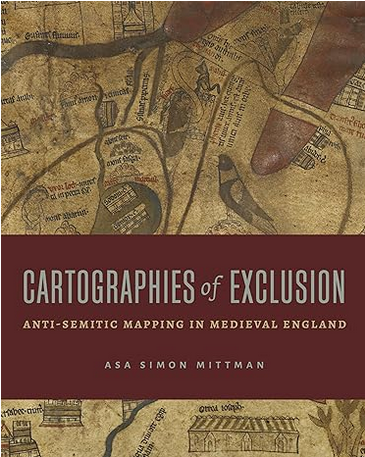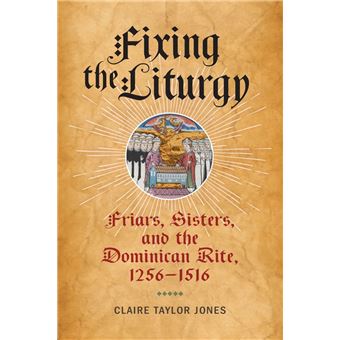Professional indexing, copyediting, and proofreading
of academic, trade nonfiction, fiction, and TTRPG books
I’m very impressed by the meticulousness of Jolanta’s proofreading and her willingness to go beyond the original parameters to make sure the job gets done right.
Robert Dees
The Power of Peasants
Co-President of the Indexing Society of Canada/Société canadienne d’indexation, I specialize in scholarly embedded and back-of-book indexing, copy editing, and proofreading in the humanities and social sciences, as well as materials relating to role-playing games and scholarly-adjacent trade non-fiction. I am a member of ISC/SCI, the American Society for Indexing, Editors Canada, and ACES: The Society for Editing.
I also offer an Index Review and Edit package for authors who have indexed their own books but would like a set of professional eyes on the index before sending it off to the publisher. Cheaper than hiring out for the full index, this package includes evaluation of the index for consistency and the application of best practices to the index.
I am an expert in history, particularly medieval European history, in which I hold a PhD. I was an assistant professor before moving into indexing. My academic knowledge is interdisciplinary, stretching from history into literature, archaeology, anthropology, religious studies, philosophy, and theology. Trained as a medievalist, my subject knowledge covers late antiquity through the early modern period, Iceland to China. I have taught and studied world civilizations and modern history, particularly that of the Middle East. As a research academic, I am familiar with the structure of academic writing, the audience it looks toward, and the needs a scholarly index must serve.
Outside of academia, I am broadly read and have particular familiarity with manuals for writing as craft, trade nonfiction (including the hard sciences and mathematics), gaming books, and travel books.
I do not use generative/predictive AI/LLMs (ChatGPT and its ilk), nor do I subcontract. When you hire me, you get my work.
Interested in a closer look at who I am, including my academic cv and resume? Learn more about me.
I have trusted Jolanta to index two large multiauthor volumes for Cambridge University Press. Both projects involved contributions from a variety of disciplines and the terminological challenge this can entail. Jolanta has the perceptive eye for detail that these projects require. Both indexes were produced on time, and allowed the publication process to proceed seamlessly. I recommend her to anyone in the humanities.
Dr. Alexander J. B. Hampton
Assistant Professor
University of Toronto
Recent Projects

Cartographies of Exclusion: Anti-Semitic Mapping in Medieval England, Asa Simon Mittman
In his close analyses of English maps from the twelfth and thirteenth centuries, Asa Mittman makes a valuable contribution to conversations centering the role of cartography in medieval Christian perceptions of Jews and Judaism.
Grounding his arguments in the history of anti-Jewish sentiment and actions rampant in twelfth-century England, Mittman shows how English world maps of the period successfully Othered Jewish people by means of four primary strategies: conflating Jews with other groups; spreading libels about Jewish bodies, beliefs, and practices; associating Jews with Satan; and, most importantly, cartographically “mislocating” Jews in time and space. On maps, Jews were banished to locations and historical moments with no actual connection to Jewish populations or histories.
Medieval Christian anti-Semitism is the foundation upon which modern anti-Semitism rests, and the medieval mapping of Jews was crucial to that foundation. Mittman’s thinking offers essential insights for any scholar interested in the interface of cartography, politics, and religion in premodern Europe.
Sneak peek at part of the metatopic from the index:
Hereford Map (ca. 1303). See also calf-idol; clothing; mappae mundi
1290 Expulsion and, 88, 89, 105
about, xii, xxii, 5, 6, 174n30
Acheron Richer, 141, 141
altars, 44, 109, 118
Anglo-Norman French, 5, 76
anti-Jewish texts and images, 86–87
ants gathering gold, 114, 114
audience, 8–9
Augustine of Hippo, 81–82, 82, 84, 84, 105, 106–7, 108
Augustus Caesar, 5, 7, 13
beasts along Israelite’s path, 90–95
bending of space and time, 77–79, 80, 86, 119
bestiaries’ influence, 90–95
boundaries of, 37, 39, 98
calf-idol opposite England, 119, 119
calf-idol’s position relative to Moses, 104, 105, 113
cannibalism, 138–39, 139
Capharica island, 141, 141
Caspian Gate, 141–42, 142
Choolissime, 141, 141
as church art, 75, 88
city of Hereford, 5, 32
crucifixion, 77, 79, 88
damned dragged to hell, 83
dead rising from graves, 9, 82, 88
dehumanization, 46
dragon-shaped animal, 80
Edward I’s legacy within, 89
English, Christian path depicted as leading to salvation, 82, 88
Enoch (city), 78
Essedones, 138–40, 139
Eve, 77
Fall of Man, 86
Garden of Eden, 77, 78
geographic context, 41
God’s-eye view, 85–86
Gog and Magog, 46, 125–26, 141, 141
Gog and Magog, Wall of, 125, 138
Griste, 89, 153, 154
Himantopodes, 153–54, 155
historical vs eschatological time, 86
as a history, 81
Hugh of St. Victor’s influence, 73
Isidore of Seville’s influence, 103
Jerusalem, 14, 77, 88
Jew depicted as superseded by Christianity, 95
Jewish badges and, 49
Jewish history appropriated, 76, 92
Jewish path depicted as leading to hell, 81, 82, 83, 84, 84, 85, 85
Jews’ absence from England, 32
Jews depicted as idol worshippers, 98
Jews in relation to Augustine, 84, 84, 106–7
Jews tied to ancient Hebrews, 45, 104, 105
Jews used as warning to Christians, 87
Last Judgment, 9, 13, 75–77
Lincoln Cathedral, 32, 32
Mahun and Moses receiving Ten Commandments, 44
Mediterranean as digestive tract, 80
monstrous peoples represented like Europeans, 152
Moses represented with horns, 44, 49, 94–95, 104, 113
Moses’s tail, 104
nakedness, 153
nations and, 61
Noah’s Ark, 104–5
Nubian Gate, 151, 153
Orosius’s influence, 13, 131
path of Israelites, 55, 73, 74, 89–95
patron, 8
pelican, 87–88, 88
People of Two Sexes, 153, 155
peregrinatio in stabilitate (pilgrimage in stability), 8, 69, 73
perimap lunette and inner circle, 14–15
Pillars of Hercules, 73, 76, 79, 79, 89
pogroms and, 88
proper vs improper worship, 108
purpose, 8, 88, 89, 92
Richard Swinfield’s influence, 54–55
saved and damned, symmetry of, 81–82
Solinus’s influence, 114
spatial organization, 73, 76–80, 78, 86
spatial reading, 80, 80–82, 84
Sphinx, 125, 126
synchronic and diachronic time, 80
Tablets of the Law, 49, 104, 109, 115
temporal construction of, 86, 143–44
temporality of Jews, 113, 119, 144
Terraconta, 141, 141
Thomas Cantilupe’s influence, 54–55
T-O format, 13, 73
Tree of Life, 77
She Changed the Nation: Barbara Jordan’s Life and Legacy in Black Politics, Mary Ellen Curtin
In She Changed the Nation, biographer Mary Ellen Curtin offers a new portrait of Jordan and her journey from segregated Houston, Texas, to Washington, DC, where she made her mark during the Watergate crisis by eloquently calling for the impeachment of President Nixon.
Recognized as one of the greatest orators of modern America, Jordan inspired millions, and Black women became her most ardent supporters. Many assumed Jordan would rise higher and become a US senator, Speaker of the House, or a Supreme Court justice. But illness and disability, along with the obstacles she faced as a Black woman, led to Jordan’s untimely retirement from elected office–though not from public life. Until her death at the age of fifty-nine, Jordan remained engaged with the cause of justice and creating common ground, proving that Black women could lead the country through challenging times.
Sneak peek at part of the metatopic from the index:
Jordan, Barbara: childhood, 27–28, 29, 31–32, 33–34, 36–37, 46–48; death, 345; feeling like an outsider, 37; as the good child, 199, 200; personal and political life, overview, 12; relationship with father, 46–48, 49–50, 79, 80, 197–202; relationship with Grandpa Jordan, 36; relationship with Grandpa Patten, 36–38, 43–45; relationship with mother, 30–32, 50. See also ambition; Barbara Jordan: A Self-Portrait (autobiography); Democratic Party; education; emotion; health; homophobia; Jordan-Graves race; law career; legacy, memory, and representations; marriage; policy positions; press coverage; private life; public speaking; public work after Congress; religion; reputation; sexual orientation and identity; teaching career; Texas Senate career; US House career
Fixing the Liturgy: Friars, Sisters, and the Dominican Rite, 1256-1516, Claire Taylor Jones
Jones opens a window into the daily practice of medieval liturgy, uncovering the astounding breadth of knowledge, the deep expertise, and the critical thinking required just to coordinate each day’s worship. Focusing on the Dominican order, Jones shows how changes in medieval piety and ritual legislation disrupted the fine-tuned system that Dominicans instituted in the thirteenth century.
World-historical events, including the Great Western Schism and the expansion of the Ottoman Empire, had an impact on the practice of liturgy even in individual communities. Through a set of never-before-studied records from Dominican convents, Jones shows how women’s communities reacted and adapted to historical change and how their surviving sources inform our understanding of the friars’ lives, as well. Tracing the narrative up to the eve of the Protestant Reformation, this study culminates in a multi-media reconstruction of the sounds, sights, and smells of worship in the rightfully famous southern German convent of St. Katherine in Nuremberg.
Sneak peek at part of the metatopic from the index:
liturgy: affective changes, 43–45; as anachronistic term, 26–27; definitions of, 27–28; vs devotion, 7, 347n14; devotional change impacting, 196; encompassing practice organizing life, 7; evolution of Dominican, 86–89; expertise necessary for, 67, 268, 269; legislative issues, 71; liturgical reform, motivations for, 86–87; as multimedia performance, 8; papal politics performed through, 113. See also directoria; Dominican order; Great Western Schism; local piety and practices; music; Nuremberg correctura; officia; ordinaria; ritual; singing
Blog
Alphabetizing Czech
06 August 2024
Last week I looked at alphabetization in Czech. Polish is comparatively simpler, as you don’t have to remember which diacritics affect the sort and which don’t. Of course, you do have to keep straight which order the three z‘s go in.
In the Polish alphabet all letters are sorted individually when alphabetizing. Letters with diacritical marks are unique and should not be interspersed in the sort with non-accented versions:
a
ą
b
c
ć
d
e
ę
f
g
h
i
j
k
l
ł
m
n
ń
o
ó
p
q
r
s
ś
t
u
v
w
x
y
z
ź
ż
The letters q, v, and x are imported into the Polish alphabet from foreign words. Polish uses a variety of diacritics to round out the letters of the Latin alphabet to suit Polish phonemes. The tails on the vowels ą and ę are called ogonki (pl.; ogonek sing.) and render the vowels nasal. The acute accent over the letters ć, ń, ó, ś, and ź are known as kreski (pl.; kreska sing.). Ć is similar to a soft ch sound in English (this soft ch is also formed by ci; a hard version of ch is formed with cz). Ś operates similarly, but for sh (with similar permutations in si and sz). Ń is an alveolo-palatal sound, similar to the ny combination in canyon. And ó makes the vowel sound found in English boot. The three Polish z forms can be difficult for non-Slavic speakers to differentiate. The sound of unmarked z is like that in zoo. Ź, like ń, is alveolo-palatal and similar to a soft si in vision. Finally, ż is a harder version of that same sound from vision (this letter is often formed in handwriting, but is less commonly typeset, as a z with a cross-stroke through the middle: ƶ).The overdot on ż is a kropka (sing.; pl. kropki). The cross-stroke through the ł signifies a w sound (the stroke is called a kreska).




